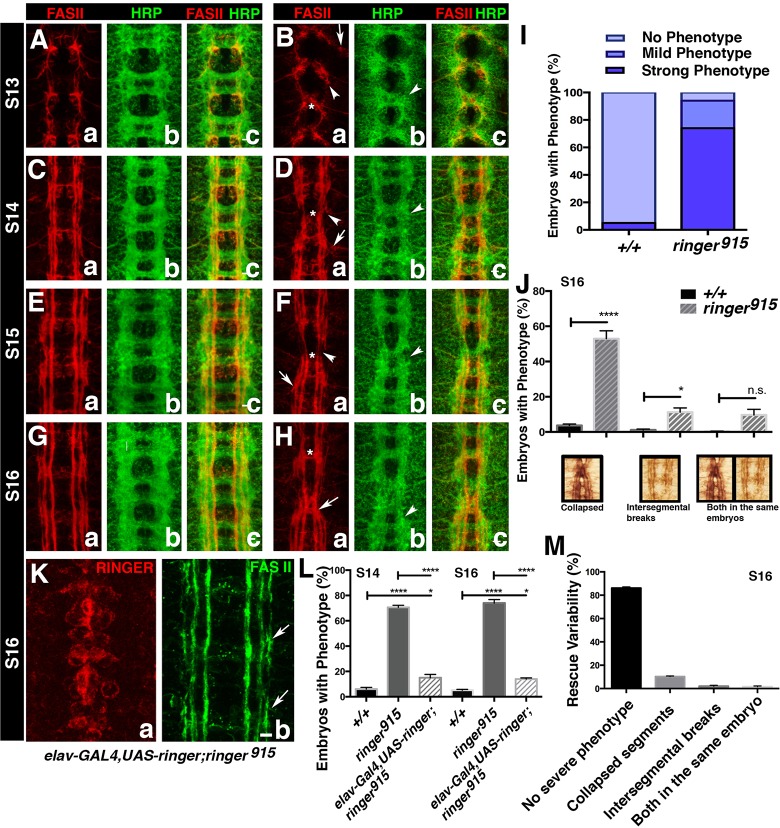Fig. 3.
Lack of ringer results in embryonic axonal growth and targeting defects. (A–H) Analysis of CNS axons at stages (S)13 through 16 using an anti-HRP antibody (Bb,Db,Fb,Hb compare to Ab,Cb,Eb,Gb) and staining of FASII reveals changes in the neuropil. Axons exhibit overall collapse toward the midline (Ba,Da,Fa,Ha, asterisks) with instances of mistargeting (Ba,Da,Fa,Ha, arrows) and intersegmental breaks (Ba,Da,Fa,Ha, arrowheads). (I) Quantification of embryos with specific phenotypes at stage 16 (n=200) of ringer915 and +/+ flies revealed severe phenotypes in 74%±2.8 (mean±s.e.m.) of ringer915 embryos, and 20%±3.4 showed mild axonal stalling (P<0.0001, ANOVA). (J) Breakdown of the severe phenotype in comparison to +/+. 53%±4.5 ringer915 exhibited axonal collapse, 11.3%±2.4 revealed axon breaks and 9.7%±2.92 exhibited both phenotypes. (K) Severe phenotypes were rescued by introduction of UAS-Ringer under elav-GAL4 in the mutant background. Scale bar: 10 μm (in Kb, applies to Aa–Hc and Ka). (L) Quantification of phenotypic rescue (n=300). At stage 14, phenotypes were observed in 21.75%±4 of rescue embryos (P<0.0001). By stage 16, 23.9%±0.5 of rescue embryos presented severe phenotypes compared to 74%±2.8 ringer915 (P<0.0001) and +/+ (P≤0.05) flies (ANOVA). There was no significant difference between rescue at stage 14 and 16 (P=0.7). (M) Breakdown of phenotypes observed in stage 16 rescue animals. Error bars are s.e.m. n.s., not significant; *P≤0.05, ****P<0.0001.

